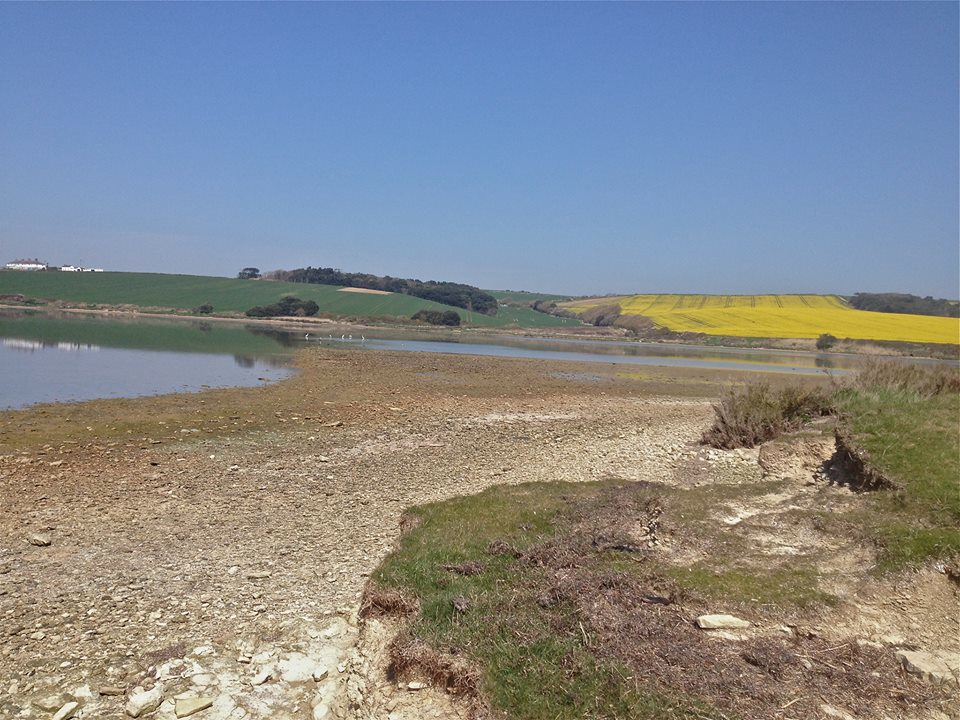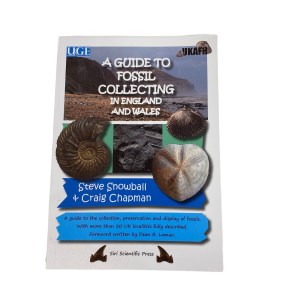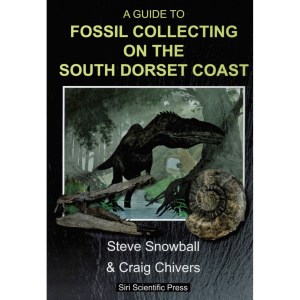Langton Herring is both a productive and geologically interesting site. The long, but stunning walk along the South West Coastal path has some wonderful scenery. This location is really for the specialist collector or those who love walking. The site yields a wide variety of brachiopods, echinoids, worm tubes, bryozoans, bivalves (especially oysters) and corals, although, in recent years, it has become over collected.

DIRECTIONS
♦ Beginning at the Elm Tree Inn (DT3 4HU; the pub is accommodating for parking), in the village of Langton Herring.
♦ Walk past the church, down Coastguard Road, heading towards Langton Hive Point. There is a small landing stage just beyond the Old Coastguard Station cottages at DT3 4HZ.
♦ It is possible to drive to this point, although the road is not in a particularly good condition and is probably best tackled on foot. The walk takes about 15 minutes at a moderate pace.
♦ There is limited parking here for two cars, just past the cottages. Once at the landing stage, descend onto the foreshore and, just to the north beyond the stile to the right, there are fossiliferous exposures in the cliff.
♦ Ref: 50.640613, -2.5461955
PROFILE INFO
FIND FREQUENCY: ♦♦♦ – The walk will take you along some very productive exposures, especially for brachiopods and bivalves. However, the site is over collected, especially during the summer months. The best time to collect is after storms and during winter.
CHILDREN: ♦♦ – Because the total walking distance of this location is 8km, we do not recommend this for young children. However, older children, who are used to walking, should be ok.
ACCESS: ♦♦ – Be aware that this location involves a total walking distance of approximately 8km. The walk will take you along sections of the South West Coastal Path, beside the beautiful and tranquil Fleet Lagoon, near the village of Langton Herring. The section consists of the varied rocks, which form part of the UNESCO World Heritage Site of the Jurassic Coast. The location is site of special scientific interest (SSSI), a Ramsar (wetland) site and a Special Area of Conservation Interest, among other designations (see restrictions).
TYPE: – Fossils are found along the foreshore, washed from the small cliffs. The best time to collect is after storms and during the winter.
FOSSIL HUNTING AND GEOLOGY
When you first reach the foreshore, exposures in the cliff display the Frome Clay (previously known as Fuller’s Earth). The Frome Clay (Bathonian age) is the lowest bed exposed in the Weymouth anticline and the cliff, of some 3.65m in height, comprises an accumulated mass of the oyster Praeexogyra hebridica var elongata, uncemented in a soft marl matrix. Collection is easy and complete specimens lie everywhere on the foreshore, without the need to disturb the beds in the cliff. Besides the oysters, there are other fossils to be found within this shell bank including the bivalve Radulopecten. The oysters are encrusted with foraminiferans, including Nubeculinella.
Below the oyster bed, tough clays with mudstone nodules emerge and can be best seen on a low tide, a short walk further to the northwest along the foreshore towards Rodden Hive Point. Here, the base of the Frome Clay is seen as muddy, shelly limestone and mudstone beds (the Wattonensis Limestone), which contains brachiopods (Rhynchonelloidella smithii and Rugetela powerstockensis) and also well-preserved bivalves, Myophorella irregularis, Lopha marshii and Trigonia elongata. The ammonite, Proceritess, also occurs here, but is invariably crushed. To the north, it is not possible to continue much further along The Fleet. The coastal footpath goes inland and access through the Ilchester Estate land is limited.

Return to the jetty and take the coastal path south. The rocks here change from Frome Clay to the Forest Marble Formation (Bathonian age). This silicate mudstone also forms the low cliffs that line the foreshore of The Fleet along this stretch and yield plenty of brachiopods (Goniorynchia boueti and others) and other fossils, dominantly bivalves.
Approaching the Moonfleet Hotel, the projecting peninsula of Herbury can be seen. Here, in the southwest corner, the Digona Bed crops out with the brachiopod, Digonella digonella, and various other species, including Dictyothyris coarctata, Avonthyris langtonensis and Goniorynchia boueti. These are strewn across the narrow beach. Echinoids, worm tubes, bryozoans and corals also occur here, but over-collecting in the past has somewhat spoilt this location. The replenishment of new specimens from the cliffs and foreshore is slow, as The Fleet erodes at a slow rate. Fossil collection is generally best after storms or in winter and always on a low tide.

The cliffs southeast of Herbury change once more to those of the Cornbrash (Bathonian), which is a medium to fine-grained limestone that is rubbly and nodular. The foreshore beneath the Moonfleet Hotel at Gore Cove contains the large bivalves, Pholadomya deltoidea and Pleuromya uniformis.
The shores of The Fleet Lagoon are good for the individual explorer, but not suitable for parties or groups. Access to much of The Fleet Lagoon is not easy for cars either and parking is not always possible. However, with its fossil content and smaller exposures, it is undoubtedly an area for the specialist.
The route above can be reversed, starting at the Moonfleet Hotel, with some parking in Fleet Lane approaching the hotel at DT3 4ED. A return can be made from the Coastal Path, which is clearly signposted, and then directly back to Langton Herring.

EQUIPMENT
You do not need much in the way of equipment, but a small steel point will come in handy, as will specimen bags or a box to put your finds in. Wellington boots are advised.
SAFETY
Before visiting this location, you should check that the tide will be low, as The Fleet is tidal and it is easy to be cut off by the tide. Keep away from the mudflats, as these can be dangerous.
ACCESS RIGHTS
Over-collecting in the past has somewhat spoilt this location. Therefore, only pick up a few specimens, leaving the rest for others. The location is also a Ramsar site and a Special Area of Conservation Interest, among other designations.
This site is an SSSI and forms part of the UNESCO World Heritage Jurassic Coast. This means you can visit the site, but hammering the bedrock is not permitted. For full information about the reasons for the status of the site and restrictions, download the PDF from Natural England.
It is important to follow our ‘Code of Conduct’ when collecting fossils or visiting any site. Please also read our ‘Terms and Conditions‘
LINKS
♦ Buy Fossils, Crystals, Tools
♦ Location Discussions
♦ Deposits Magazine
♦ Join Fossil Hunts
♦ UK Fossils Network
-
A guide to fossil collecting in England and Wales
Original price was: £20.00.£16.00Current price is: £16.00. -
A guide to fossil collecting on the South Dorset Coast
£20.00











































